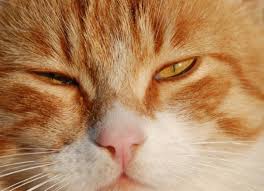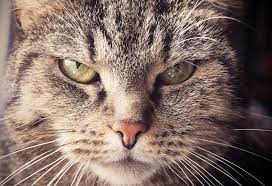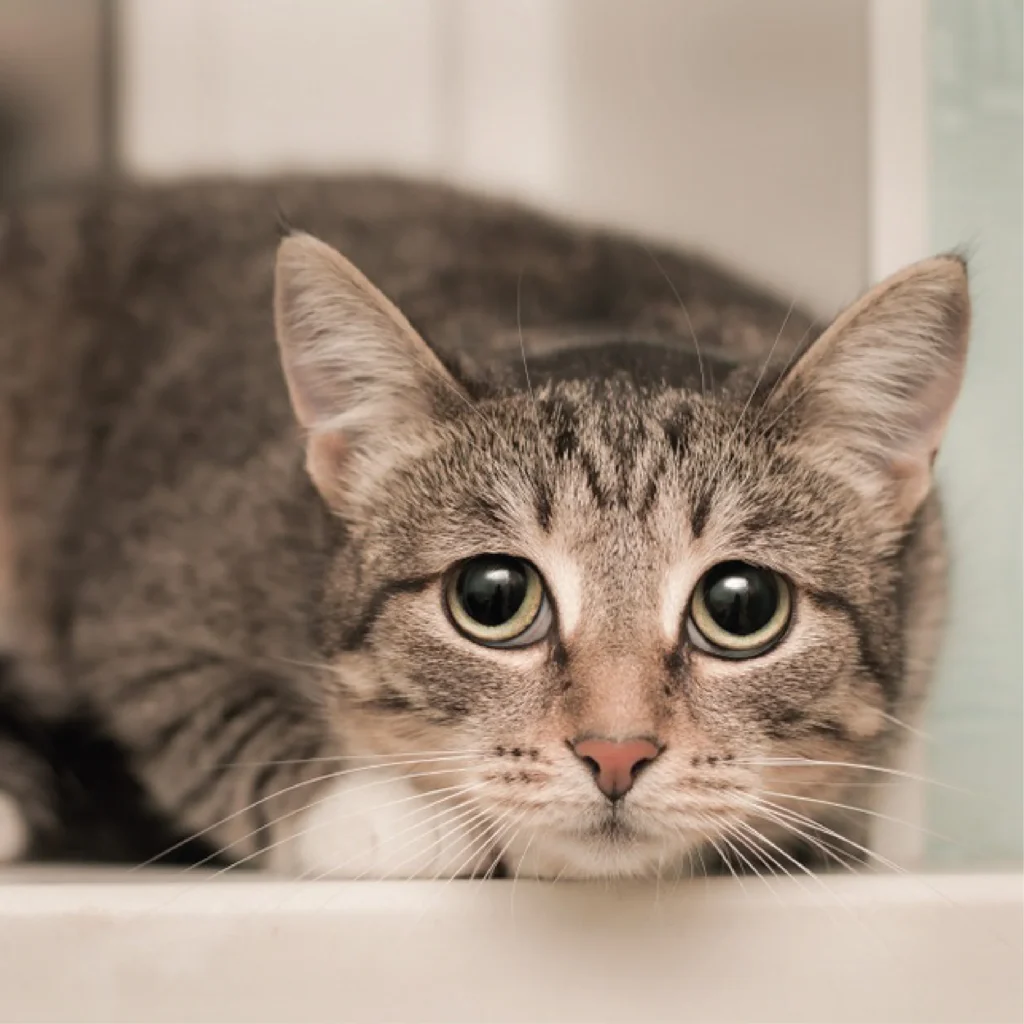Cats get a bit trickier than dogs here. Dogs evolved to work together in packs so their facial expressions are more obvious for the sake of communication with the pack. Cats, on the other hand, are solitary hunters and don’t need for others to know what they are thinking as readily. Still cats’ eyes do help to communicate their mood and even can help you know if they are in pain.

A relaxed cat will have their eyes partially or completely shut, they appear to be in a state of delight and contentment. They do not tend to make direct eye contact, but if they do they punctuate it with blinks. Sometimes your cat will squint in enjoyment of scritches and cheek rubs, this is a sign of love and trust. When your kitty slow blinks it is a sign of acceptance and comfort. Directing a blink at you means she trusts you and can, therefore, not need to pay too close attention to you. You can direct a sweet lovey slow blink in return. Slow blinks from you are also a good way to meet a new cat and indicate your acceptance of them.

A prolonged direct stare without blinking indicates a threatening or confrontational signal. Aggressive cats will direct a hard stare at the one they are attempting to threaten. This is the cat to give space to, and avoid direct eye contact with in order to avoid injury.

Fearful cats will often direct a wide eyed stare with a furrowed brow at what they are afraid of.
While diverting eye contact is an appeasing gesture toward another. If you are facing a potentially aggressive cat, you can divert your eye contact, and back down, so to speak.
Cat pupils can also dilate and constrict depending on the light, but also depending on their state of arousal.
Constricted pupils are expressing contentment for the most part. But constriction can also occur during offensive aggression. This is important communication in multi-cat households. The would-be aggressor can use a direct stare with pupils only slightly dilated to indicate to the others they get access to resources first. This is a subtlety that humans often miss before any aggression actually breaks out.

Dilated pupils are associated with states of arousal such as fear, excitement, overstimulation, play, or defensive aggression. However, dilated pupils can also be a tell for pain in a cat. Cats often do not show pain in other ways being potential prey items.
